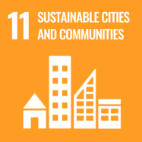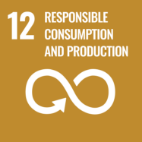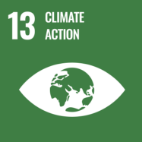Search
Home
About Us
Our Businesses
Investor Relations
Sustainability
SDP Capital



 E-SPA
E-SPA
- Ara Damansara
- Bandar Ainsdale
- Bandar Bukit Raja
- Bandar Universiti Pagoh
- Battersea Power Station
- Bukit Jelutong
- City of Elmina
- KL East
- KLGCC Resort
- Melawati
- Nilai Impian
- Planters' Haven
- Putra Heights
- Serenia City
- SJ7
- Subang Jaya City Centre (SJCC)
- USJ Heights
INTERNATIONAL
- Ara Damansara
- Bandar Ainsdale
- Bandar Bukit Raja
- Bandar Universiti Pagoh
- Bukit Jelutong
- City of Elmina
- KLGCC Resort
- Melawati
- Nilai Impian
- Putra Heights
- Serenia City
- Subang Jaya City Centre (SJCC)
INTERNATIONAL
Filter by Location
All
- All
- Kuala Lumpur
- Selangor
- Negeri Sembilan
- Johor
- International
Explore
Filter by Location
All
- All
- Kuala Lumpur
- Selangor
- Negeri Sembilan
- Johor
- International
Explore
Filter by Location
All
- All
- Kuala Lumpur
- Selangor
- Negeri Sembilan
- Johor
- International
Explore
-
TOWNSHIPBandar Bukit RajaLive within the pride of Klang
-
PROPERTIES
Filter by Location
All
- All
- Kuala Lumpur
- Selangor
- Negeri Sembilan
- Johor
- International
Explore
Filter by Location
All
- All
- Kuala Lumpur
- Selangor
- Negeri Sembilan
- Johor
- International
Explore
Filter by Location
All
- All
- Kuala Lumpur
- Selangor
- Negeri Sembilan
- Johor
- International
Explore
Filter by Location
All
- All
- Kuala Lumpur
- Selangor
- Negeri Sembilan
- Johor
- International
Explore
Filter by Location
All
- All
- Kuala Lumpur
- Selangor
- Negeri Sembilan
- Johor
- International
Explore
Filter by Location
All
- All
- Kuala Lumpur
- Selangor
- Negeri Sembilan
- Johor
- International
Explore
-
TOWNSHIPKLGCC ResortLive at Malaysia’s Most Prestigious Golf Course
-
PROPERTIES
Filter by Location
All
- All
- Kuala Lumpur
- Selangor
- Negeri Sembilan
- Johor
- International
Explore
Filter by Location
All
- All
- Kuala Lumpur
- Selangor
- Negeri Sembilan
- Johor
- International
Explore
Filter by Location
All
- All
- Kuala Lumpur
- Selangor
- Negeri Sembilan
- Johor
- International
Explore
-
TOWNSHIPPlanters' Haven
Filter by Location
All
- All
- Kuala Lumpur
- Selangor
- Negeri Sembilan
- Johor
- International
Explore
-
TOWNSHIPPutra HeightsFrom City To Serenity
-
PRECINCTThe GladesLive. Inspired.
-
PROPERTIES
Filter by Location
All
- All
- Kuala Lumpur
- Selangor
- Negeri Sembilan
- Johor
- International
Explore
Filter by Location
All
- All
- Kuala Lumpur
- Selangor
- Negeri Sembilan
- Johor
- International
Explore
-
TOWNSHIPSJ7The Collaboration Hub
-
PROPERTIES
Filter by Location
All
- All
- Kuala Lumpur
- Selangor
- Negeri Sembilan
- Johor
- International
Explore
Filter by Location
All
- All
- Kuala Lumpur
- Selangor
- Negeri Sembilan
- Johor
- International
Explore
-
TOWNSHIPUSJ HeightsA privileged lifestyle for the discerning few
-
PROPERTIES
Filter by Location
All
- All
- Kuala Lumpur
- Selangor
- Negeri Sembilan
- Johor
- International
Explore
-
TOWNSHIPBandar AinsdaleWhere happiness begins
-
PROPERTIES
-
TOWNSHIPBandar Bukit RajaLive within the pride of Klang
-
PROPERTIES
-
INTERNATIONALBattersea Power StationLondon’s newest neighbourhood
-
TOWNSHIPSerenia CityLive your aspirations
-
PROPERTIES



